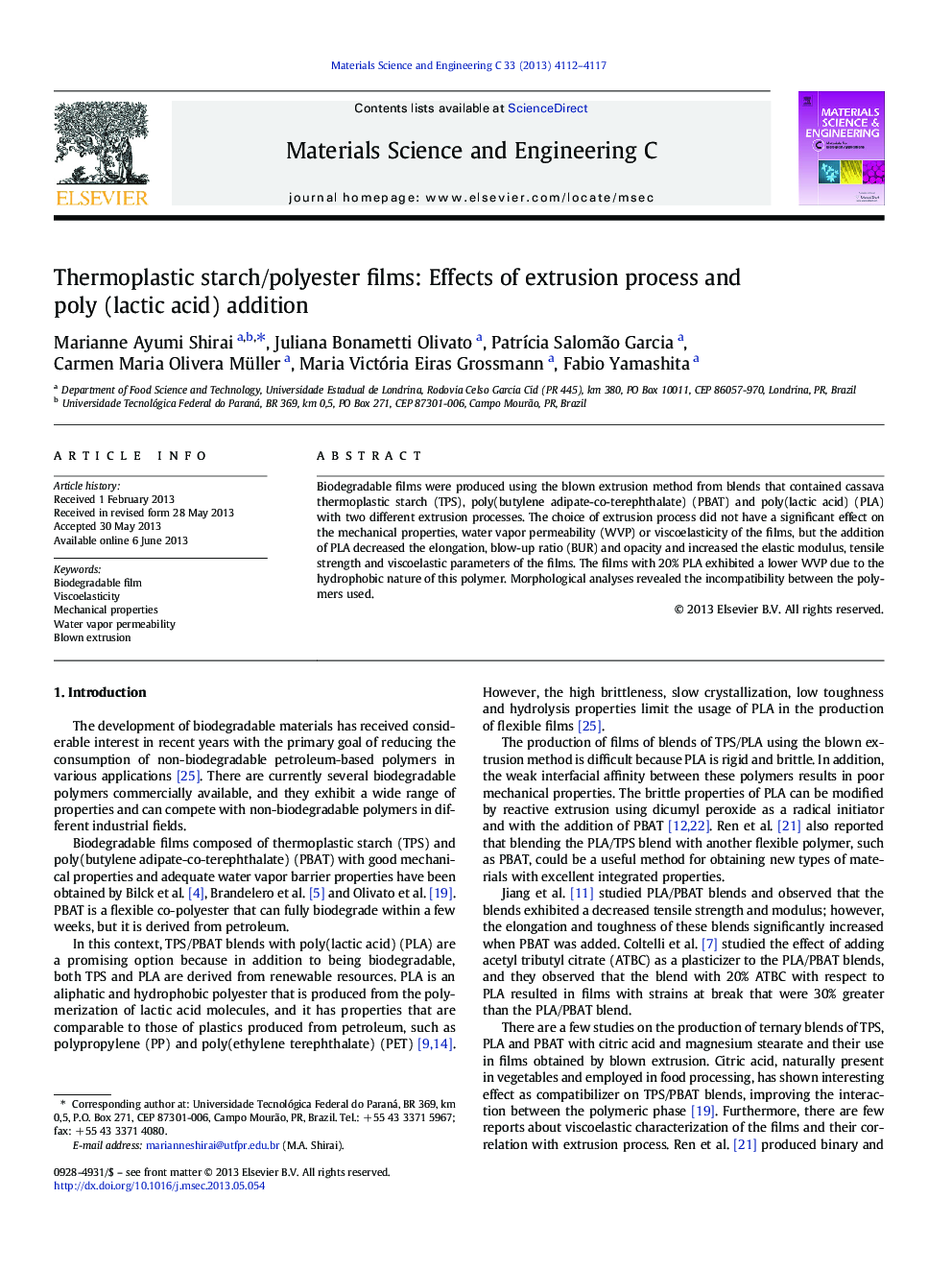| Article ID | Journal | Published Year | Pages | File Type |
|---|---|---|---|---|
| 10614594 | Materials Science and Engineering: C | 2013 | 6 Pages |
Abstract
Biodegradable films were produced using the blown extrusion method from blends that contained cassava thermoplastic starch (TPS), poly(butylene adipate-co-terephthalate) (PBAT) and poly(lactic acid) (PLA) with two different extrusion processes. The choice of extrusion process did not have a significant effect on the mechanical properties, water vapor permeability (WVP) or viscoelasticity of the films, but the addition of PLA decreased the elongation, blow-up ratio (BUR) and opacity and increased the elastic modulus, tensile strength and viscoelastic parameters of the films. The films with 20% PLA exhibited a lower WVP due to the hydrophobic nature of this polymer. Morphological analyses revealed the incompatibility between the polymers used.
Related Topics
Physical Sciences and Engineering
Materials Science
Biomaterials
Authors
Marianne Ayumi Shirai, Juliana Bonametti Olivato, PatrÃcia Salomão Garcia, Carmen Maria Olivera Müller, Maria Victória Eiras Grossmann, Fabio Yamashita,
